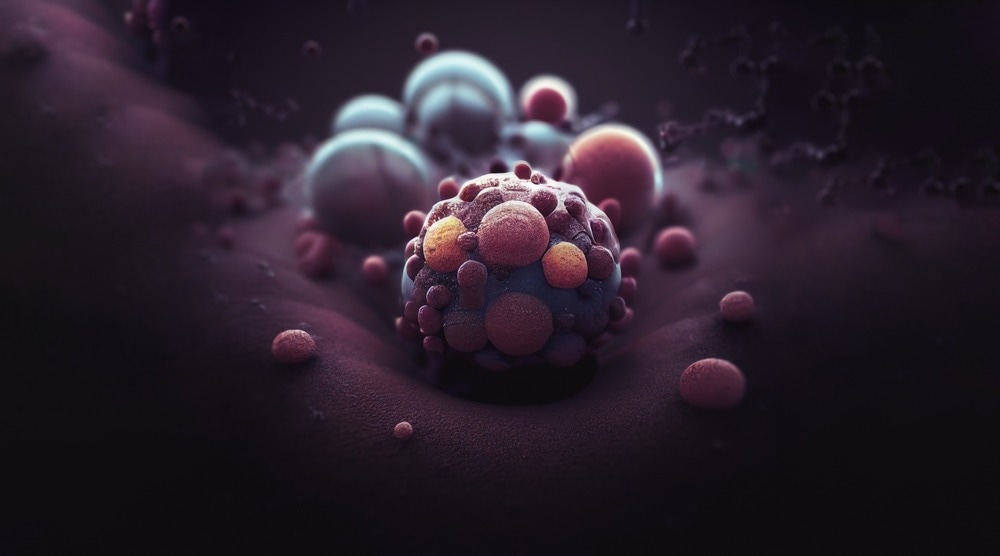In a recent article published in Molecules, researchers from China investigated the therapeutic potential of D-Mannitol–Cerium–Quercetin (MCQ/R) coordination polymer nanoparticles in treating acute lung injury (ALI). The unique properties of MCQ/R nanoparticles, such as their antioxidant and anti-inflammatory effects, make them promising candidates for ALI treatment.

Image Credit: CI Photos/Shutterstock.com
Background
ALI is a life-threatening condition characterized by excessive infection and oxidative stress in the lungs. Current remedy alternatives for ALI are confined, highlighting the need for novel therapeutic processes.
Nanoparticles have emerged as promising candidates for ALI treatment due to their ability to target specific pathways involved in the disease process. The MCQ/R coordination polymer nanoparticles possess antioxidant and anti-inflammatory properties, making them attractive for ALI remedies.
The Current Study
The MCQ/R nanoparticles were synthesized using a self-assembly technique. Cerium ions were first complexed with quercetin and rutin under optimal conditions to form a metal–polyphenol bond. D-mannitol was then added to enable the formation of ionic bonds between mannitol and cerium ions, leading to the assembly of the nanoparticles. The interaction among rutin, quercetin, and cerium oxide played a crucial role in the nanoparticle formation method.
Various analytical techniques were used to study the MCQ/R nanoparticles. Ultraviolet-visible spectrophotometry (UV) was used to investigate the absorption spectra of the nanoparticles, providing information on their electronic transitions. Fourier transform infrared spectroscopy (FTIR) was utilized to identify functional elements present on the surface of the nanoparticles.
Inductively coupled plasma mass spectrometry (ICP-MS) was employed to quantify the fundamental composition of the nanoparticles, specifically the cerium concentration. Dynamic mild scattering (DLS) evaluation was conducted to study the size distribution and stability of the nanoparticles in aqueous environments. Transmission electron microscopy (TEM) visualized the morphological capabilities of the metal–polyphenol bonds on the nanoscale.
The healing efficacy of MCQ/R nanoparticles was evaluated via a series of experiments involving in vitro and in vivo models of ALI. In vitro studies included free-radical scavenging assays to evaluate antioxidant activity and hemolysis tests to assess biocompatibility.
In vivo research involved animal trials, which included hematoxylin and eosin (H&E) staining of lung tissues, inflammation factor detection, inflammatory cell differential counts, proteomics analysis, and quantitative real-time PCR (RT-qPCR) analysis to investigate the impact on ALI progression.
Results and Discussion
The MCQ/R nanoparticles were synthesized and characterized using various analytical strategies. The UV analysis showed distinct absorption spectra of the nanoparticles, indicating their electronic transitions. FTIR identified the functional groups in the nanoparticles, confirming the formation of coordination bonds among rutin, quercetin, mannitol, and cerium ions. ICP-MS quantified the basic composition of the nanoparticles, highlighting the presence of cerium as a key component.
DLS evaluation established the nanoparticles' favorable size distribution and stability in aqueous environments. TEM imaging showcased the morphological functions of the nanoparticles, revealing a consistent rectangular shape indicative of uniformity and order in their formation process.
The MCQ/R nanoparticles exhibited powerful antioxidant properties, as verified by their DPPH radical scavenging activity. This antioxidant capacity is essential in combating oxidative pressure, a key contributor to ALI pathogenesis.
The nanoparticles also showed promising anti-inflammatory results, which are important for mitigating the inflammatory reaction related to ALI. The synergistic interplay among rutin, quercetin, and cerium ions within the nanoparticles probably contributed to their greater healing efficacy in ALI models.
In vitro research discovered the biocompatibility of MCQ/R nanoparticles via hemolysis tests, indicating their protection profile for ability therapeutic applications. In vivo experiments on animal models of ALI validated the nanoparticles' capacity to relieve lung damage, as evidenced by hematoxylin and eosin (H&E) staining results.
Inflammation factor detection and inflammatory cell differential counts further supported the nanoparticles' anti-inflammatory properties in vivo. Proteomics evaluation furnished insights into the molecular mechanisms underlying the therapeutic consequences of MCQ/R nanoparticles, highlighting their potential targets in ALI pathways.
Additionally, quantitative RT-qPCR analysis revealed that the nanoparticles modulate inflammatory gene expression, further validating their anti-inflammatory capacity.
Conclusion
The findings of this study highlight the potential of D-Mannitol–Cerium–Quercetin coordination polymer nanoparticles as a novel therapeutic approach for acute lung injury. The nanoparticles demonstrated strong antioxidant and anti-inflammatory effects, suggesting their utility in mitigating ALI-associated lung damage.
Further research and clinical trials are warranted to validate the efficacy and safety of MCQ/R nanoparticles for ALI treatment, paving the way for improved patient outcomes in the future.
Journal Reference
Zhang, Y., et al. (2024). Synergistic Therapeutic Effects of D-Mannitol–Cerium–Quercetin (Rutin) Coordination Polymer Nanoparticles on Acute Lung Injury. Molecules, 29, 2819. doi.org/10.3390/molecules29122819,